We Are All In This Together
When it comes to helping end the HIV epidemic, we’re all in this together. Not just for one, but for the many. We recognize our role within the HIV community and that by working together with community organizations, allied healthcare professionals, and advocates every day, we can help improve the lives of everyone living with HIV, and for those affected by HIV. We're dedicated to standing with the HIV community, advancing research and development, and supporting organizations making meaningful change to help all those impacted by HIV live longer, healthier lives.

Pioneering Science & InnovationALL IN FOR THE ADVANCEMENT OF PREVENTION, TREATMENT, AND A CURE
We have been committed to leading advancements in medicine since the beginning of the HIV epidemic. Early on, HIV treatments were complex and burdensome, sometimes requiring more than 20 pills a day.1 Recognizing this unmet need, we worked to develop treatments that were one or two pills a day. This approach led to the development of multiple therapies for the treatment of HIV. We have also launched medicines used as pre-exposure prophylaxis (PrEP) to help prevent HIV transmission. And together with the community, we're working to make sure that prevention means more than just preventing the acquisition of HIV with medicine.
Although HIV is now considered a chronic, manageable disease, there is no cure for HIV.2,3 We are committed to driving forward research in pursuit of a cure to help put HIV and its impact in the past. Building on our history of curing difficult diseases, we are working to find a cure for HIV in our own labs and with more than 100 research partners. We continue to focus on increasing HIV testing and innovating across the HIV care continuum with the hopes that, when coupled with the ongoing efforts to break down barriers to care wherever they are, the age of HIV can one day come to an end.
Expanding Access to CareHELPING BREAK DOWN BARRIERS


People impacted by HIV have historically faced a wide range of systemic barriers that stand in the way of obtaining equitable care.4 Race, sexual identity, geographic location, and socioeconomic status are among many factors across which we see vast, persistent health disparities caused by stigma, racism, unequal access to healthcare, and other barriers.5 By working together with advocacy groups and community organizations, we’re committed to breaking down barriers to inequality by supporting HIV communities, exposing and removing the underlying social and systemic factors, creating policy reform, and supporting grassroots activism.
In the United States, we’ve created programs to offer information and resources to help people connect with the care they need. The Gilead Advancing Access® program helps eligible individuals, whether they are insured or uninsured, understand their coverage and identify financial support options available to them. Through the Advancing Access Patient Assistance Program, eligible patients without insurance may be able to receive the Gilead HIV treatment and HIV prevention medications their healthcare professional has prescribed free of charge. For individuals who have commercial insurance, but need help paying for their out-of-pocket costs, the Advancing Access Co-pay Coupon Program* provides co-pay assistance to eligible patients for their prescribed Gilead HIV medications.
To help make it easier for people to access the medicine they need around the world, in 2003, we launched programs to provide access to our medicines in 140 low- and middle-income countries. Since 2018, more than 12 million people have benefited from Gilead medicines in low- and middle-income countries. We also know it will take more than medicine to end the HIV epidemic and that’s why we work with public health officials, community advocates, researchers, doctors, and patients to understand barriers and opportunities in communities impacted by HIV.
*For commercially insured eligible patients only. Restrictions apply. See terms and conditions at www.GileadAdvancingAccess.com
Corporate GivingOFFERING SUPPORT AND RESOURCES


The work being done throughout the HIV community to create meaningful change inspires us to help build the community from within, amplify those everyday efforts, and address the barriers to care. As part of this commitment, through our grantee programs, we support patient advocates, healthcare professionals, and nonprofit groups around the world that work tirelessly in local communities to help improve the lives of people affected by HIV. We have been recognized as one of the top private funders of HIV-related programs.6 In 2022, Gilead:
- Distributed 948 HIV-related grants totaling just over $177 million for HIV-related projects
- Was recognized by Funders Concerned about AIDS (FCAA), as the #2 philanthropic funder of HIV-related programs globally and #1 in the United States
- Received top recognition as the #1 funder of programs providing support for:
- Advocacy
- General operating support
- Sex workers
- Transgender communities
- Gay, bisexual, and other men who have sex with men
Providing EducationSHARING INSIGHTS WITH THE COMMUNITY
Together we can help end the HIV epidemic for everyone, everywhere. A key to reaching that goal is HIV education. With the belief that it is important to start educational work from the ground up, we helped to create a team of Community Liaisons to work with community organizations and healthcare professionals at the local level, taking the time to understand the needs of each community and provide tailored HIV educational resources to help end the HIV epidemic.
In addition, knowledge-sharing between leaders can help us support one another in our common goal of helping end the HIV epidemic. To this end, we have created educational programs aimed at addressing emerging trends and issues impacting the HIV epidemic to provoke thought leadership in the HIV space. The Blueprints for Success Training Institutes is a series on virtual skill-building programs for leaders in HIV to help equip them with the knowledge and tools to address new challenges around HIV care and prevention. Examples of topics covered include Cultural Humility, Institutional Stigma, and Telemedicine.
We’ve also created educational sites that feature programs designed to educate and share facts about HIV to help people protect themselves and each other, including:
HIV Test Now
HIV testing is an important part of self-care. HIV Test Now is an educational resource to help people get tested and know their HIV status.
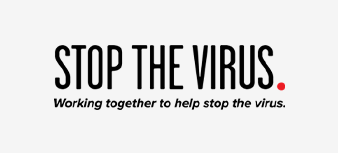
Help Stop the Virus
HIV education for everyone, showing how prevention, testing, and treatment work together to help stop HIV in our bodies and communities, featuring videos and other resources.
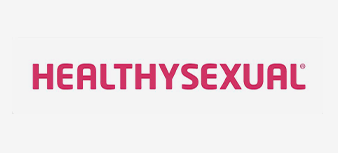
Healthysexual®
Teaching individuals how to protect their sexual health through tips and other materials, with a focus on everyone knowing about their HIV prevention options.
WORKING TOGETHER TO HELP END THE HIV EPIDEMIC
None of us can do this work alone—seeing the age of HIV come to an end is a collective mission. That’s why we work closely with healthcare providers, researchers, academics, policymakers, advocates, activists, people living with HIV, and those affected by HIV.
Working with the community toward our collective, common goal of ending the HIV epidemic, we’re supporting the innovative work of grassroots organizations to help improve access to care by eliminating barriers and advancing education. Below are some of our key partnerships and initiatives in HIV:
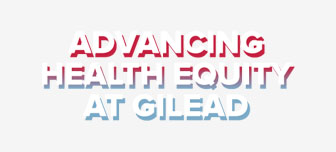
Advancing Health Equity at Gilead
We leverage our decades of clinical expertise, scientific innovation, and deep relationships with community partners to continue advancing equity for people with the greatest unmet needs. Our health equity efforts enable us to reach more people with our innovative therapies, especially those in marginalized and disinvested communities where individuals are disproportionately impacted by the diseases we seek to prevent, treat and cure. We have identified three global health equity priorities that will help us achieve our mission of creating a healthier world for all people: helping to enable access to life-changing medicines, delivering innovation to reduce inequities, and igniting social impact to advance human rights for communities.
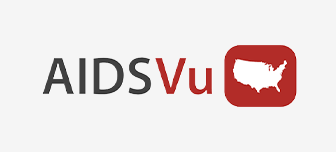
AIDSVu.org
Launched in partnership between Gilead and Emory University’s Rollins School of Public Health and the Center for AIDS Research at Emory University (CFAR), AIDSVu.org is an interactive mapping tool that helps users visualize HIV data at the national, regional, and local levels, and provides location services for HIV testing, prevention, and care.
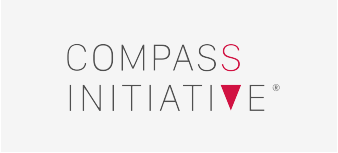
COMPASS Initiative®
(COMmitment to Partnership in Addressing HIV/AIDS in Southern States): Gilead's over $100M, 10-year commitment to help address the HIV epidemic in the US South.
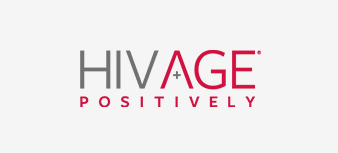
HIV Age Positively®
Aims to support programs focused on improving the quality of life and health of those aging with HIV, and making an impact on HIV policy.
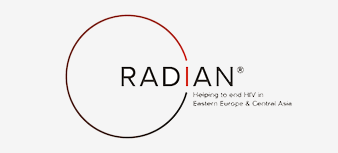
RADIAN®
A partnership between Gilead Sciences and the Elton John AIDS Foundation to address new HIV infections and deaths from HIV-related illnesses in Eastern Europe and Central Asia.
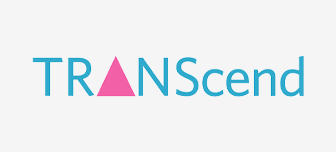
TRANScend®
Supports trans-led organizations working to reduce the impact of HIV within non-binary and transgender communities.
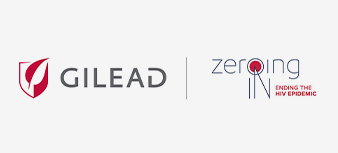
Zeroing In: Ending the HIV Epidemic®
Supports organizations and partners who are working to increase the overall health and wellness of communities most impacted by HIV and the COVID-19 pandemic.
MOVING AHEAD, TOGETHER
To keep forward momentum on all of these causes, we’ve created this website as an educational resource for emerging leaders and advocates in the HIV community who are engaged in our shared work to help end the HIV epidemic for everyone, everywhere.
Explore more- Tseng A, Seet J, Phillips EJ. The evolution of three decades of antiretroviral therapy: challenges, triumphs and the promise of the future. Br J Clin Pharmacol. 2015;79(2):182-194.
- National Institutes of Health. HIV/AIDS. Updated October 7, 2015. Accessed March 16, 2021.https://www.nih.gov/about-nih/what-we-do/nih-turning-discovery-into-health/hiv/aids
- World Health Organization. HIV/AIDS. Updated July 2021. Accessed August 19, 2021. https://www.who.int/data/gho/data/themes/hiv-aids
- Wawrzyniak AJ, Rodriguez AE, Falcon AE, et al. The association of individual and systemic barriers to optimal medical care in people living with HIV/AIDS (PLWHA) in Miami-Dade County. J Acquir Immune Defic Syndr. 2015;69(0 1):S63-S72.
- Centers for Disease Control and Prevention. Defining health disparities. Updated September 4, 2020. Accessed July 29, 2021. https://www.cdc.gov/nchhstp/healthdisparities/default.htm
- Funders Concerned About AIDS. Philanthropy’s Response to HIV and AIDS: 2022 Grantmaking. Published July 2024. Accessed August 8, 2024. https://resourcetracking.fcaaids.org/wp-content/uploads/2024/07/FCAA-SupportReport2022.pdf